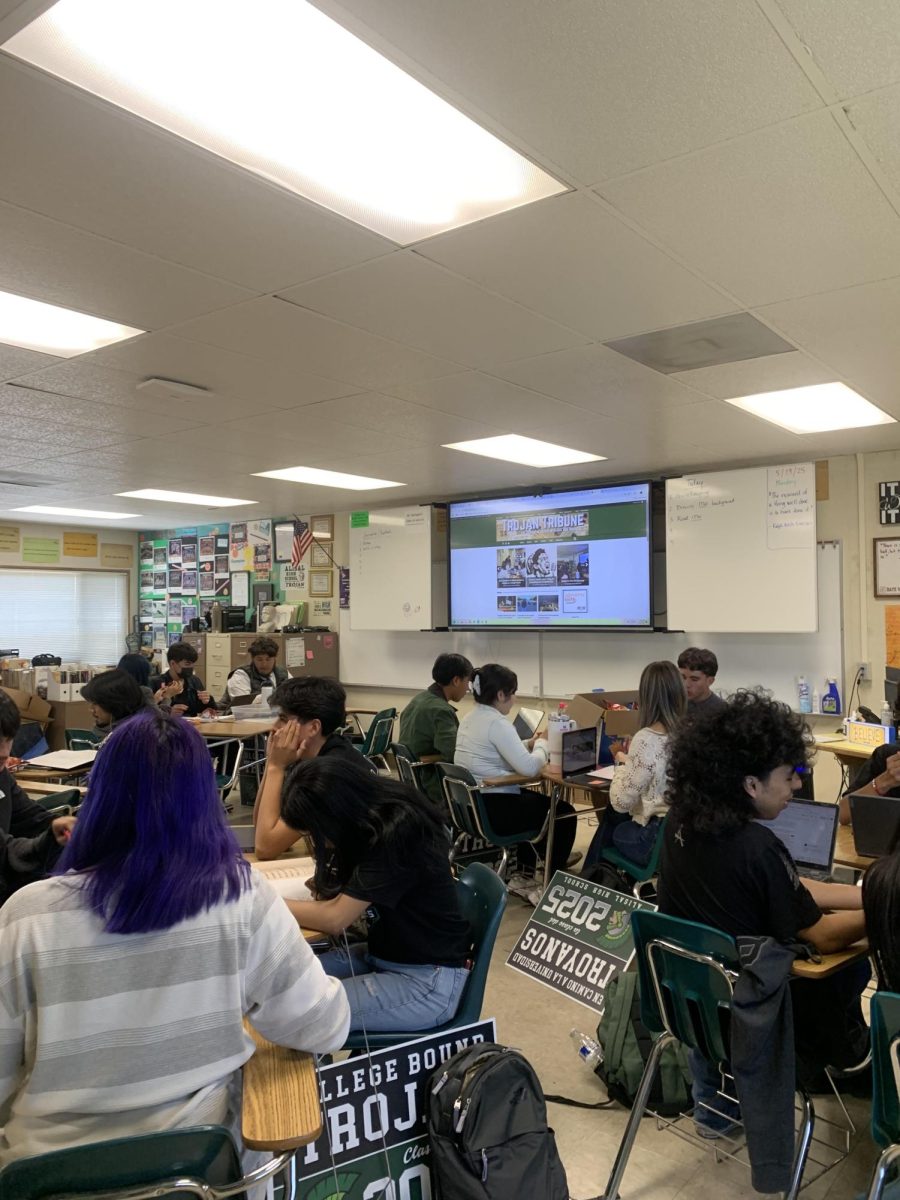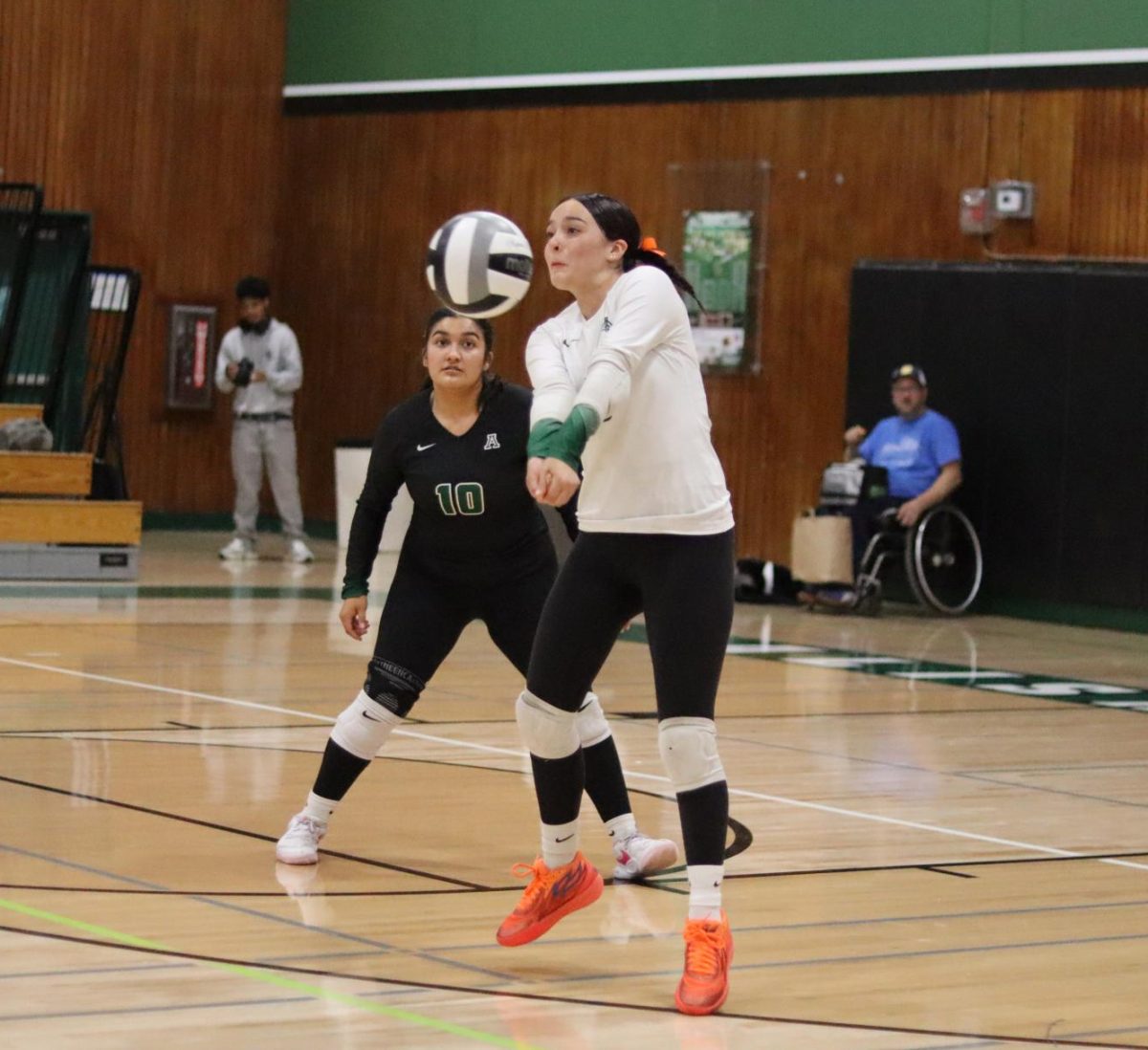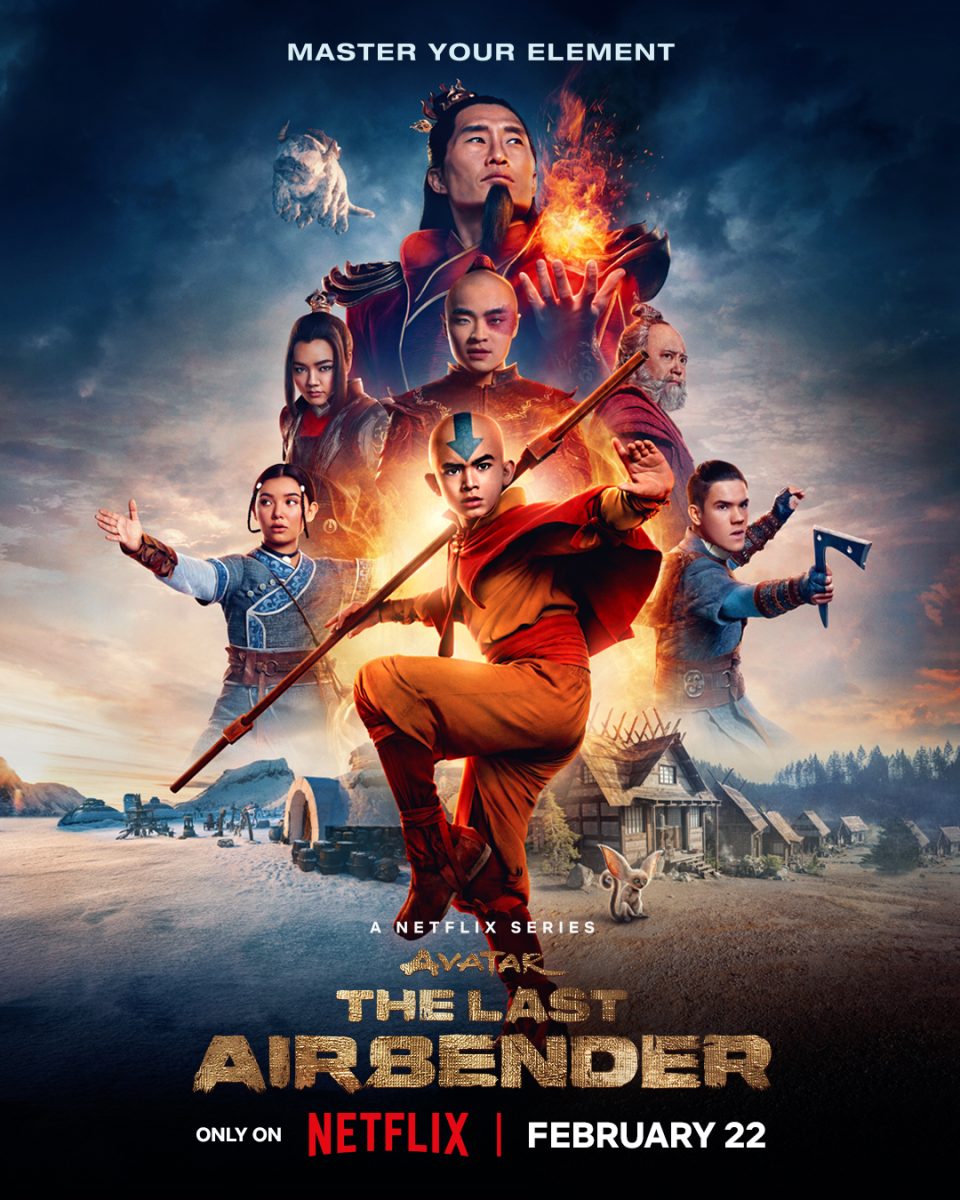When people think of Avatar, they either think of the blue people from the movie Avatar (2013, 2022) or the animated Avatar: The Last Airbender. This review is talking about the latest incarnation, Netflix’s live-action, Avatar: The Last Airbender.
Although seen as a category of Japanese anime, Avatar: The Last Airbender is not considered to be part of manga or Japanese animation because it is an American animated television series produced by Nickelodeon Animation Studios. The animation came first on February 21st, 2005. But after it ended on July 19, 2008, Aang’s tale continued on in comics.
With the huge popularity of Avatar: The Last Airbender, it is no surprise it became a live action remake. Earlier this year, the anime “One Piece” was able to get a live action, eight-episode series produced by the partnership of Tomorrow Studios and Netflix. The TV show was not well received at first because of the different ethnicities of the main characters, however despite this the live action series was renewed for a second season. Based on the popularity of the character and the stories of Avatar, Netflix produced a 8-episode live action show that gives a general gist of the Avatar lore and although, based on the animation Avatar: The Last Airbender, the live action adaptation can be treated as its own adaptation because of its unique features and different storyline with the characters.
The main cast consists of some new faces like the actors who play Aang (Gordon Cormier), Uncle Iroh (Paul Sun-Hyung Lee), and Fire Lord Ozai (Daniel Dae Kim). While other characters were minor actors such as Katara (Kiawentiio) who was in Anne with an E, Azula (Elizabeth Yu) who was in May December, and Sokka (Ian Ousley) who was in other works like 13 Reason Why and Young Sheldon, and a well known actor who plays Prince Suko (Dallas Liu) had a main role in Pen15.
The premise of the series is the conflict of the Fire Nation wanting to assert its dominance as the strongest element and going about it by destroying the other elements. Lord Ozai, the king of the Fire Nation, goes to end the lives of all airbenders to get rid of the next avatar, who is destined to be an airbender, to allow for the cycle to start over until the fire nation is the one with the avatar, and the only nation left standing.
The story starts off following two children from the water nation: Sokka and Katara, that find Aang and his sky bison, Appa, who were able to escape the Fire Nation’s genocide because they went to explore. From here, Aang and his new friends go on various adventures to different places such as Kyoshi Island (Women Warrior Island), Omashu (Earth Kingdom), and Northern Water Tribe, where they hide away from the show’s villain, Prince Zuko, who wants to capture Aang, the lost avatar, to bring to the Fire Nation for his father’s approval.
When watching the live action, I felt the actors did seem a bit older than what the animation portrayed. Compared to the 13 year olds in the animation, the actors of Sokka and Katara seemed to be older than Aang, who looked the right age. Because of the little change in age, Aang seemed to be treated more like a kid than Sokka and Katara were. The controversy of the age not being exact to the animation caused lots of criticisms from fans, specifically because certain storylines of the animation wouldn’t be able to form because of the actors’ ages.
But in my opinion, I felt the actors’ ages and the way they portrayed the emotions of the characters made the experience of the live action better than in the animation. In the animation, the characters don’t show the relationships amongst themselves as well because of how young they are, always bickering around with each other and bullying each other. The acting in the live action was very emotional and got the point across very precisely of the relationship between the siblings, Sokka and Katara, and how they warm up to Aang, seeing him as family later on in the series. The siblings’ way of interacting really resembled one of taking care of each other with no parent figure around, Sokka tried to be more of an adult figure for his sister. Unlike the animation, the live action brings out more sibling interactions, where the siblings protect each other but they don’t leave out the original bickering side of the siblings’ character either allowing for a good combination of both.
What made the experience of watching the live action different from the anime was how the actors, costume designers, and hairstylists, re-enact the different hairstyles and outfits portrayed in the anime. Katara is represented by her signature two braided strands in the front with her hair tied up, Sokka has long hair styled into a ponytail, Aang is bald with the markings of arrows around his body like a typical monk, and Prince Zuko has his signature bald head with a top ponytail. Not only this, but most of the costumes throughout the whole series were on point in showing the different styles each element had, from the orange jumpsuit to the traditional water tribe coats.
Like the newly released series, Percy Jackson and the Olympics, the budget for Avatar: The Last Airbender was about $120 million to produce the eight episode show and in action and cinematography, the Avatar: The Last Airbender, out-shined the Percy Jackson Series, with its incredible fight scenes and great showcase of action. Every episode held a fight scene between the protagonist and a new character introduced, showing us how overtime the bending of Katara and Aang becomes better. The fighting scenes had great CGI demonstrating the different skill for the bending of each element would look like in real life. Every element was portrayed in a different manner, water was delicate, fire was fierce, wind was mighty, while earth wasn’t really shown as much but still possessed importance.
The TV show did receive some criticisms, but not like the first attempt at live-action in the 2010 movie of the same name. The movie was about an hour and forty five minutes long and fans did not take the adaptation lightly. Fans criticized the acting, the way the director, M. Night Shyamalan, wrote the screenplay to be a basic take on Aang’s story that didn’t fulfill their expectations of an action-packed movie that truly reflected the series perfectly. The new live action did a better job at this, as many fans watched the series and created such a commotion that the Netflix original was announced to have a second and third season, on its way!
For me, like most fans, I felt like continuing the story through the live action series on Netflix was well deserved. The action demonstrated continuously throughout the series was very consistent and made me press next for the next episode, even when I was supposed to wait for a friend to watch the series together. The series, like any, did leave off on a cliffhanger, so I am thankful and excited to see what season two and three brings to Aang’s story.
Overall, I would give this TV show a 9/10 and would recommend the series to any audience, even die-hard fans, because the series is meant to be taken light-heartedly and having an open mind when watching the series will bring new explorations to the Avatar’s story.






![Senior Jayden Duarte dives across the goal line for one of his five touchdowns in a dominant 62-40 victory over Monterey. It has been a highly successful season for Duarte, and he credits his coaches for putting him in positions to succeed and make key plays. “The goal is to help wherever the coaches need me, receiver, running back, [and] DB,” he said.](https://alisaltrojantribune.com/wp-content/uploads/2025/10/IMG_3599-2-1200x800.jpg)


















